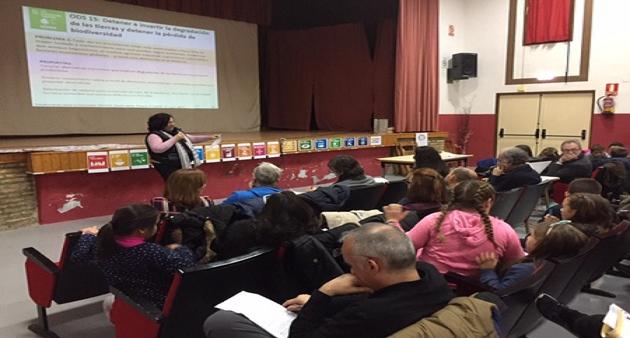
11 de May de 2020
Dinamización rural
May 11, 2020. What is a rural innovation lab? A space for exchange, study, and experimentation based on participatory research and action strategies. This means that participants define the guidelines and objectives of the research process, as well as its purpose. In this way, social actors participate in the co-creation of solutions and proposals to local problems, always through changes or innovations that improve specific aspects of their community.
- The "Rural Labs" are social innovation laboratories where local challenges are addressed to develop innovative collective actions, with the participation of all its inhabitants.
- These centers also aim to meet the Sustainable Development Goals (SDGs)
 |
In this way, the "Rural Labs" address environmental challenges to develop innovative collective actions, open to the participation of local organizations and residents.
“Rural Labs” in Spain
There are four “Rural Labs” that have been launched in Spain:
LAB 1: Villages of Ejea
The area where the Ejea Rural Lab is located includes the Aragonese villages of Bardenas, El Bayo, Pinsoro, Rivas, El Sabinar, Santa Anastasia, and Valareña.
These localities are investing in Rural Development Programs to boost their economies, although they face the major challenge facing rural areas: halting depopulation.
Currently, they are working on the challenge of becoming a sustainable community with the support of the Rural Lab.
LAB 2: The town of Alfindén
This municipality has a long agricultural tradition. However, its industrial development has led to an increase in the industrial workforce, to the detriment of the agricultural workforce.
What does the Rural Lab address? The need to foster harmonious coexistence in the village, understood as the search for leisure alternatives for adolescents and young people, as well as the search for an intergenerational common space.
LAB 3: Santa Engracia (Tauste)
Santa Engracia is one of the colonization villages in the municipality of Tauste (Zaragoza). The colonization villages were created in the mid-20th century by the National Colonization Institute.
Currently, land holdings are concentrated in fewer hands due to the lower profitability of agricultural work. This has led to a population exodus to larger towns such as Ejea, Zaragoza, and Tudela.
The main challenge identified is once again the need to foster coexistence for a sustainable community that embraces a future for the youth population and intergenerational convergence.
LAB 4: Barataria Island
The territory of the Insula Barataria Rural Centre is made up of the municipalities of Alcalá de Ebro, Bárboles, Boquiñeni, Cabañas de Ebro, Grisén and Luceni, in the Ribera Alta del Ebro region.
It is the smallest Aragonese region in area, yet it has one of the highest population densities compared to the average Aragonese region.
Traditionally, its economy was centered on the orchards cultivated between the Ebro and Jalón rivers, a tributary of the former. Currently, the Opel Spain plant, along with its auxiliary industries, is located in Figueruelas.
Due to the active participation of this community in both the Global Schools project and the Transformative Schools, Ínsula Barataria has recently been selected as a “Rural Lab with a mission: to explore, together with its inhabitants, the challenges of local development with a perspective of the Sustainable Development Goals, also known as the 2030 agenda .









